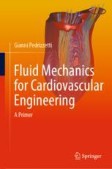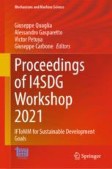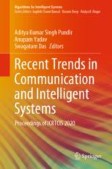Search
Search Results
-
Force-dependent recruitment from myosin OFF-state increases end-systolic pressure–volume relationship in left ventricle
Finite element (FE) modeling is becoming increasingly prevalent in the world of cardiac mechanics; however, many existing FE models are...

-
Personalized evaluation of the passive myocardium in ischemic cardiomyopathy via computational modeling using Bayesian optimization
Biomechanics-based patient-specific modeling is a promising approach that has proved invaluable for its clinical potential to assess the adversities...

-
Monitoring variability in parameter estimates for lumped parameter models of the systemic circulation using longitudinal hemodynamic measurements
BackgroundPhysics-based cardiovascular models are only recently being considered for disease diagnosis or prognosis in clinical settings. These...

-
Cardiac Mechanics I: Fluid Dynamics in the Cardiac Chambers
This chapter starts by introducing the general electromechanical cycle of the beating heart. It sketches out the connection between the electric...
-
Finite Element Analysis of Myocardial Work in Cardiomyopathy
Analysis of myocardial work is essential in determination of left ventricle ejection fraction (LVEF) and non-invasive assessment of different types...
-
A multiscale model of the cardiovascular system that regulates arterial pressure via closed loop baroreflex control of chronotropism, cell-level contractility, and vascular tone
Multiscale models of the cardiovascular system can provide new insights into physiological and pathological processes. PyMyoVent is a computer model...

-
Myocardial biomechanical effects of fetal aortic valvuloplasty
Fetal critical aortic stenosis with evolving hypoplastic left heart syndrome (CAS-eHLHS) can progress to a univentricular (UV) birth malformation....

-
Multiscale modelling of Potts shunt as a potential palliative treatment for suprasystemic idiopathic pulmonary artery hypertension: a paediatric case study
Potts shunt (PS) was suggested as palliation for patients with suprasystemic pulmonary arterial hypertension (PAH) and right ventricular (RV)...

-
A fast computational model for circulatory dynamics: effects of left ventricle–aorta coupling
The course of diseases such as hypertension, systolic heart failure and heart failure with a preserved ejection fraction is affected by interactions...

-
Effects of myocardial sheetlet sliding on left ventricular function
Left ventricle myocardium has a complex micro-architecture, which was revealed to consist of myocyte bundles arranged in a series of laminar...

-
Applications of Intermittent Pneumatic Compression for Diagnostic and Therapeutic Purposes
Intermittent Pneumatic Compression (IPC) technique is prescribed for several treatments, as the management of venous leg ulcers or the prevention of...
-
Improvement of Cardiovascular System Diseases Diagnostics by Using Multiparametric Data
The most common cause of death among humans is cardiovascular disease. An effective way to detect early signs of cardiovascular disease is to...
-
Comparative Analysis of Machine Learning Algorithms for Detection of Pulmonary Embolism—A Non-cardiac Cause of Cardiac Arrest
Relationship between pulmonary embolism and cardiac arrest is presented in this paper. The proposed research is divided into two phases. The first...
-
Hemodynamic Cardiovascular Indices to Predict the Response to Angiotensin-II in Septic Shock
Septic shock is known to severely impair cardiovascular function, leading to altered pulse wave transmission and blood pressure (BP) control. Current...
-
A Machine Learning-Based Blood Volume Classification Model for Cardiopulmonary Resuscitation Robot Feedback System
During Cardio Pulmonary Resuscitation (CPR), appropriate heart compression affects the quality of CPR, which is directly related to the patient’s...
-
Exploring Feature Selection Using Supervised Machine Learning Algorithms for Establishing a Link Between Pulmonary Embolism and Cardiac Arrest
Healthcare is the cardinal component on which the foundation of human welfare can be laid. Healthcare research mainly focuses on the healthy living...
-
Restoring the Arterial Tree in Sepsis: A Neglected Therapy Target
Sepsis is a leading cause of death in critically ill patients. Currently, no therapeutic strategy has consistently shown to improve survival and...
-
Numerical study of the effects of bifurcation angle on hemodynamics during pulsatile flow in a carotid artery bifurcation
To investigate the effects of the hemodynamics of arterial shape, mainly the bifurcation angle and sinus shape of the carotid artery, a computational...

-
Non-invasive parameters of autonomic function using beat-to-beat cardiovascular variations and arterial stiffness in hypertensive individuals: a systematic review
PurposeNon-invasive, beat-to-beat variations in physiological indices provide an opportunity for more accessible assessment of autonomic dysfunction....

-
Novel description for optimality principle of cerebral arteries within the circle of Willis: a Womersley number-based scaling law
Deviation from the optimal bifurcation structure causes abnormal hemodynamic stress, increasing the risk of cerebral aneurysm initiation at the...

